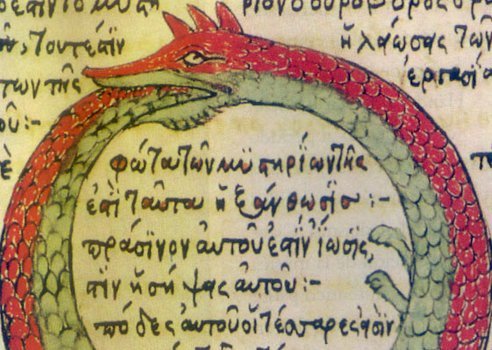Reading time: Less than 1 minute
Increase your vocabulary and you’ll make your writing much more precise. That’s why I provide a word of the week. Today’s word: ouroboros….
I’m a big fan of Geraldine DeRuiter — a travel, food and, really, anything writer — who won a 2019 James Beard Foundation Journalism award for best personal essay.
A recent blog post of hers ran under the impossible-to-resist headline during this time of Covid: How to be creative when everything is bad. Her earnest and wonderfully argued post not only led me to another book I enjoyed (Rachel Friedman’s And Then We Grew Up), but it also gave me my word of the week: ouroboros.
Here’s how DeRuiter used it:
No one wants to hear about a writer struggling to write. It’s a navel-gazing ouroboros, a nice big loop of self-woe from people with too much time on their hands.
Turns out I already knew the meaning of the word. I just didn’t know the word itself! Ouroboros refers a serpent with its tail in its mouth (see image at the top of this post), continually devouring itself and being reborn from itself. Ouroboros expresses the unity of all things, material and spiritual, which never disappear but perpetually change form in an eternal cycle of destruction and re-creation.
The first known appearance of the ouroboros is in the Enigmatic Book of the Netherworld, found in the tomb of Tutankhamun, in the 14th century BC. The text concerns the actions of the god Ra and his union with Osiris in the underworld.
The etymology of the word is Greek, a compound of οὐρά (ourá, meaning “tail”) + -βόρος (-bóros, meaning “devouring”).


